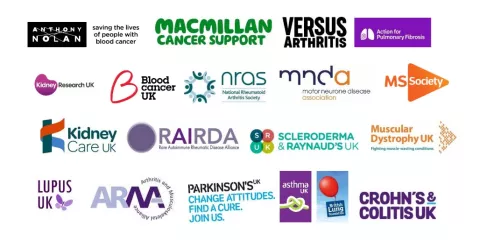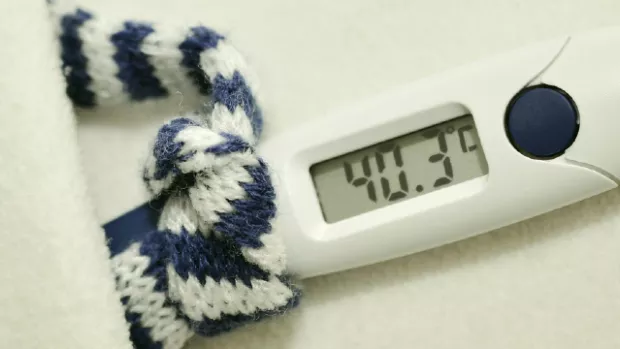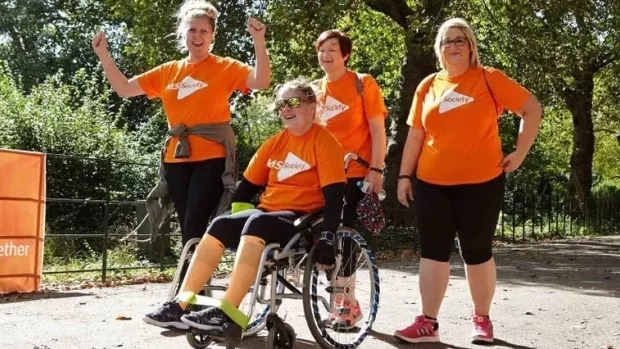5 tests for the Government’s plan for Living with COVID-19: the support required for people at high-risk
The Prime Minister is expected to outline a ‘plan for living with COVID-19’ in England. This briefing sets out 5 tests the plan must pass to make sure people at highest risk from COVID-19 are well supported to live with COVID-19 now and into the future
This briefing was produced by 18 charities that support communities that remain at higher risk from COVID-19 (Motor Neurone Disease Association, Scleroderma and Raynaud's UK, Action for Pulmonary Fibrosis, Anthony Nolan, The Arthritis and Musculoskeletal Alliance, Asthma UK British Lung Foundation, Blood Cancer UK, Crohn’s and Colitis UK, Kidney Care UK, Kidney Research UK, Lupus UK, Macmillan Cancer Support, Muscular Dystrophy UK, MS Society, National Rheumatoid Arthritis Society, Parkinson’s UK, Rare Autoimmune Rheumatic Disease Alliance and Versus Arthritis).
The 5 tests for the plan are:
- Directly address the concerns of people at highest risk and commit to improve communication with them
- Smooth, timely access to COVID-19 treatments
- Lateral flow tests remain free
- Improve employment protection and support
- Set out a plan for the use of preventative COVID-19 treatments and prioritise further research into treatments and vaccines
Why this matters
Everybody wants to get back to normal, not least people at higher risk from COVID-19 who are among those most acutely affected by the pandemic. However, for that to be possible, Government policy must prioritise supporting them to manage their risk. This is important because:
- Many severely immunocompromised people do not get as much protection from available vaccines as the general population. Initial data from the OCTAVE study, published in August 2021, found that a significant proportion of clinically at-risk patients with certain immunocompromised or immunosuppressed conditions, mount a low, or undetectable, immune response after two doses of the same COVID-19 vaccine
- Many severely immunocompromised people are more likely to suffer severe illness if they catch COVID-19 compared to the general population (they were considered clinically extremely vulnerable). There is considerable uncertainty regarding rates of severe illness, hospitalisation and mortality in this cohort following three vaccine doses and boosters. However, a study from OpenSAFELY published in December 16, 2021 concluded there are potentially several groups who are at higher risk of COVID-19 vaccine breakthrough infection including those who are immunocompromised. Among the study cohort, comorbidities with the highest rates of COVID-19 related hospital admissions included chronic kidney disease, dialysis and kidney transplant.
This means that, despite the vaccine programme, COVID-19 continues to pose a serious threat to this group of people.
5 tests for the plan for living with COVID-19
1. Directly address the concerns of people at high-risk and commit to improved communication with them
We need both a statement from the Secretary of State for Health and a press conference, with scientists, directly addressing the concerns of our communities as we enter this new phase with no ‘restrictions’.
Too often those at highest-risk have received poor, confusing or no communication from the Government about changes that have huge impact on their lives. They need information about the clinical basis for decisions to end existing COVID-19 measures and what it means for their risk, communicated in terms people understand (such as providing comparison to other risks they take) if they are to have confidence in ‘living with COVID-19’. As well as about the services and support available to help them rebuild confidence (for example, from the voluntary sector). The public also need to know exactly what steps they can take to support them.
People who were formerly classed as clinically vulnerable or clinically extremely vulnerable should also be addressed. We know many still have residual anxieties and no one wants someone to be taking more precautions than are necessary, to the detriment of their wellbeing, simply because they have not received information and reassurance about their risk.
Finally, Government must commit to directly communicating with people at high risk regarding future policy change on COVID-19 measures, vaccine programmes, and treatments. Any guidance designed for them must be available in a full range of different languages and easy read versions, and not be solely reliant on internet access.
Targeting such guidance at the right people in a timely manner requires improvements in the upkeep and sharing of patient data across the NHS. There have been issues throughout the pandemic with poor or incomplete data, resulting in some people being incorrectly told to shield, while others were not but should have been, and it taking too long to identify and invite immunocompromised people for vaccination.
2. Smooth, timely access to COVID-19 treatments
Treatments that help people avoid serious illness and hospitalisation if they get COVID-19 are vital tools to protect people at highest risk. However many people have told us they have struggled with timely access to the drugs since were introduced, resulting in too many missing out on treatments that could help keep them out of hospital.
The Government must continue to prioritise addressing any barriers to access, so that everyone eligible can access treatment quickly and easily. Specifically, ensuring the right cohort of patients are communicated with, and specialist secondary care teams, GPs, 111 and 119 equipped to provide timely information to patients and refer them for treatment. In addition, ensuring the eligibility list reflects the latest clinical evidence over time is very important.
3. Lateral flow tests remain free
Lateral flow tests are vital to making our communities feel safer and able to live more normally. Accessible testing means people at higher risk can establish whether or not someone they want to spend time with has COVID-19 and make decisions about risk accordingly.
Charging for tests would likely increase the risk of people who are severely immunocompromised catching COVID-19, and therefore force them to consider isolating themselves from contact with others, at the expense of their wider health and wellbeing.
4. Improve employment protection and support
People in our communities at high-risk and in employment have told us about struggling with balancing risks to their health and their livelihoods.
People whose clinicians advise them not to go into their workplace because of their risks from COVID-19 should have the right to work from home. Where neither working from home or other reasonable adjustment to manage risk are possible, people must have access to adequate financial support while they are off work, for example by making a higher rate of statutory sick pay available (ideally aligned to the European Average wage) available in such circumstances.
The Government should continue to provide up to date resources for employers to ensure their workplace is safe for employees, are aware of their legal requirement to provide reasonable adjustments, and of available sources of statutory support.
The Government should also demonstrate how they will enforce safety standards without only relying on employees bringing complaints. Alongside this, a much more ambitious public awareness campaign is needed from the Government to ensure clinically vulnerable people are aware of their legal rights at work, how to raise concerns when an employer does not meet their legal duties and where they can get support to challenge them.
5. Set out a plan for the use of preventative COVID-19 treatments and prioritise more research into treatments and vaccines
Government must set out plans for the use of prophylactic (preventative) treatments for people that are severely immunocompromised, to reduce their risk of catching COVID-19 and give them increased confidence to live normal lives.
More research is also needed into the efficacy of both COVID-19 treatments and vaccines (fourth doses and boosters) in a variety of immunocompromised groups so that people can have informed conversations with their clinicians about risk and managing it.





